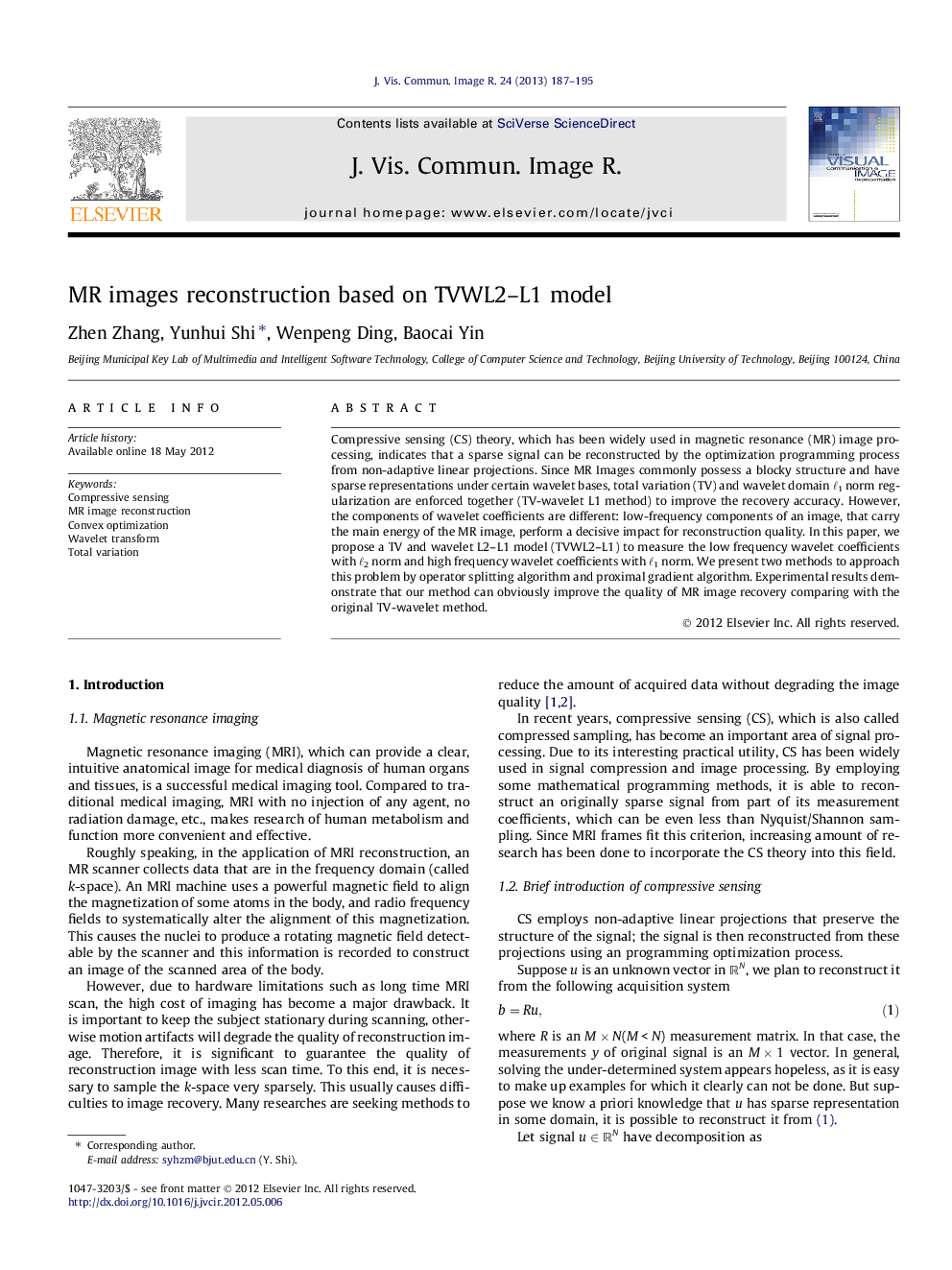| Article ID | Journal | Published Year | Pages | File Type |
|---|---|---|---|---|
| 529839 | Journal of Visual Communication and Image Representation | 2013 | 9 Pages |
Compressive sensing (CS) theory, which has been widely used in magnetic resonance (MR) image processing, indicates that a sparse signal can be reconstructed by the optimization programming process from non-adaptive linear projections. Since MR Images commonly possess a blocky structure and have sparse representations under certain wavelet bases, total variation (TV) and wavelet domain ℓ1 norm regularization are enforced together (TV-wavelet L1 method) to improve the recovery accuracy. However, the components of wavelet coefficients are different: low-frequency components of an image, that carry the main energy of the MR image, perform a decisive impact for reconstruction quality. In this paper, we propose a TV and wavelet L2–L1 model (TVWL2–L1) to measure the low frequency wavelet coefficients with ℓ2 norm and high frequency wavelet coefficients with ℓ1 norm. We present two methods to approach this problem by operator splitting algorithm and proximal gradient algorithm. Experimental results demonstrate that our method can obviously improve the quality of MR image recovery comparing with the original TV-wavelet method.
► This paper proposes a new TV and wavelet L2–L1 model for magnetic resonance images recovery. ► This paper employs an improved wavelet for remove redundancy of magnetic resonance images. ► This paper presents two algorithms for solving the TV and wavelet L2–L1 model.
